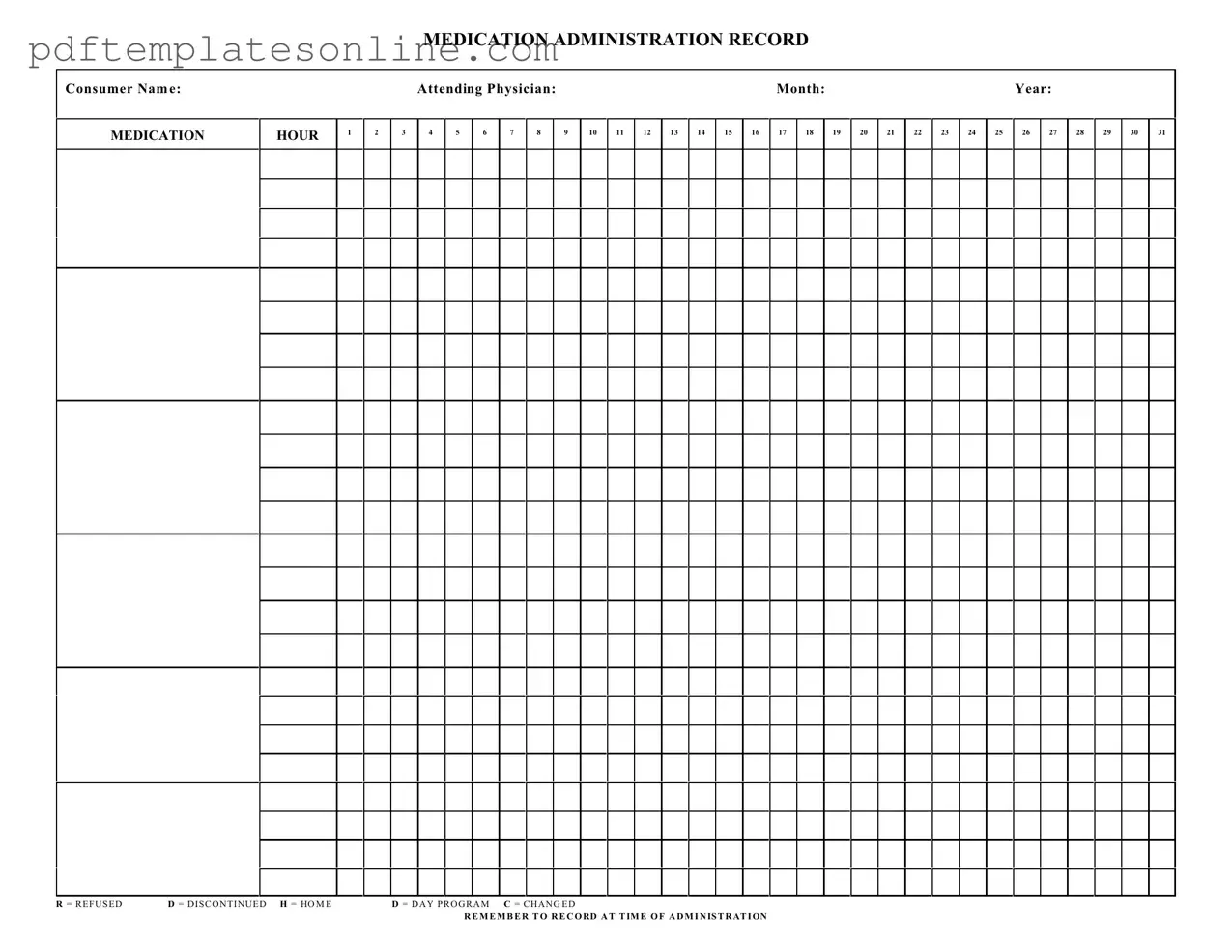Filling out the Medication Administration Record Sheet can be a straightforward task, but mistakes often occur. One common error is failing to include the consumer's name. Without this crucial information, it becomes impossible to track which individual received the medication. Always ensure that the name is clearly written at the top of the form.
Another frequent mistake is neglecting to record the attending physician's name. This detail is important for accountability and communication. If a question arises about the medication, knowing who prescribed it can streamline the process of obtaining clarification.
Many people also forget to fill in the month and year on the form. This oversight can lead to confusion about when the medications were administered. Always double-check that these fields are completed to maintain accurate records.
Inaccurate recording of the medication hours is another common issue. Each hour should be clearly marked to indicate when the medication was given. Missing or incorrect times can cause serious medication errors and affect the consumer's health.
Some individuals mistakenly use abbreviations or codes that are not universally understood. For instance, marking "D" for discontinued without explaining what it means can lead to misinterpretation. It is best to use clear language to ensure everyone understands the information on the record.
Another error involves not recording whether the medication was refused or changed. If a consumer refuses medication, it must be documented at the time of administration. Likewise, any changes to the medication regimen should be noted immediately to avoid confusion later.
People sometimes forget to sign or date the record after completing it. This step is essential for verifying that the medication was administered as prescribed. Always include your signature and the date to provide a complete and accurate record.
Lastly, many fail to review the completed form for accuracy. Taking a moment to check for any mistakes can prevent significant issues down the line. Regular audits of the Medication Administration Record Sheet can help catch errors and improve the overall process.
